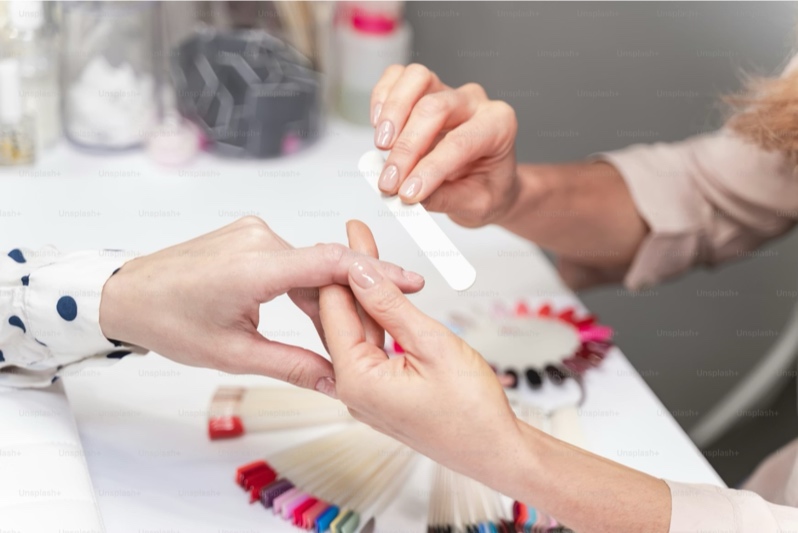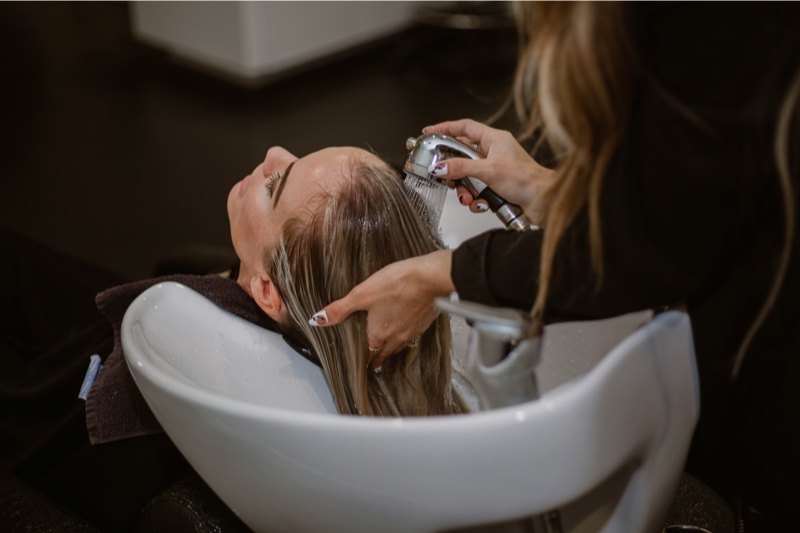
How to Get Acrylic Nails Off Safely: The Guide Your Clients Need
Your phone buzzes. It's a text from a regular client: "Hey! Can I remove my acrylics at home? I can't make it in this week."
A question asked by people everywhere all the time at different times, but hey, we know you’re busy and need this sorted quickly and safely.
At the e...
Your phone buzzes. It's a text from a regular client: "Hey! Can I remove my acrylics at home? I can't make it in this week."
A question asked by people everywhere all the time at different times, but hey, we know you’re busy and need this sorted quickly and safely.
At the end of the day, you don’t want to risk destroying their natural nails.
Here’s the guide you can send to them to get them off safe and sound.
The Safe Way: The Step-by-Step Guide for Clients to Follow
Share this process with your clients. Post it on your Instagram. Save it as a highlight. Make it easy for them to do this right.
Step 1: Trim and File
First, clip those acrylics down as close to the natural nail as comfortable.
This isn't the time to preserve length—shorter is easier to remove.
Then grab a coarse file (100-grit works perfectly) and file down the entire top layer of the acrylic.
Remove all the shine, any gel top coat, and nail art. This step is crucial—it allows the acetone to actually penetrate the acrylic instead of just sitting on top of a shiny, sealed surface.
Step 2: Protect the Skin
Here's where you teach clients to think like professionals. Before touching acetone, apply petroleum jelly or cuticle oil generously around the nail beds and on the surrounding skin.
Acetone is incredibly drying, and this protective barrier keeps their skin from turning into the Sahara Desert. It's a small step that makes a huge difference in how their hands look and feel afterward.
Step 3: The Acetone Soak
Soak cotton balls in 100% pure acetone—not the diluted stuff from the drugstore. Place one saturated cotton ball on each nail, then wrap each fingertip tightly with aluminium foil.
The foil creates a seal that traps heat and keeps the acetone in contact with the acrylic. Now comes the hard part: waiting. Set a timer for 20-30 minutes. Watch a show. Scroll TikTok.
Just don't rush it.
Alternative method: Pour acetone into a bowl and soak fingers directly. Warm the acetone slightly by running the bottle under warm water first (never microwave or heat it directly—acetone is extremely flammable).
This method works faster but uses more product.
After soaking, unwrap one finger and check progress. The acrylic should look cloudy and feel soft. If it's still hard and shiny, rewrap and give it more time. Patience here prevents damage later.
Step 4: Gentle Removal
Use an orange stick or cuticle pusher to gently coax the softened acrylic off the nail. It should slide off with minimal pressure. If you're meeting resistance, it needs more soaking time. Period.
Never force it. Never pry it. Never use anything sharp or metal. If it doesn't want to come off easily, back into the acetone it goes.
Step 5: Aftercare is Everything
Once all the acrylic is removed, wash your hands thoroughly with soap and water. Then immediately—and we mean immediately—apply cuticle oil to every nail and the surrounding skin.
Follow up with a nail strengthener and hand cream. The nails have been through a process and need serious hydration. Tell your clients to repeat the oil and moisturizer routine daily until their next appointment.
What to Tell Clients to NEVER Do
Make this crystal clear. Print it. Post it. Tattoo it on your salon wall if you have to.
Don't peel or pick them off. This removes layers of the natural nail plate and causes damage that lasts for months.
Don't use tools to pry or force anything. If it's not sliding off easily, it needs more soaking.
Don't skip the filing step—it's not optional.
Don't rush the acetone soak because you're impatient. Don't forget to moisturize afterward, or their nails will be dry and brittle.
And here's your safety net: "If anything feels wrong, uncomfortable, or painful—stop immediately and come see us." Give them permission to ask for help without judgment.
The Acetone-Free Alternative
For clients with acetone sensitivity or those who prefer a gentler approach, there's another option. It just takes longer.
Soak nails in warm, soapy water for 40 minutes. Yes, really 40 minutes.
The acrylics will eventually soften enough to ease off with a cuticle pusher gently. This method is much slower and works best on thinner acrylic applications, but it's genuinely gentler on skin and nails.
It won't work on heavy builder gel or thick sculpted nails—those need acetone or professional removal.
When to Tell Clients to Come to the Salon Instead
Not every removal should happen at home, and your clients need to know when to skip the DIY route.
If the acrylics are thick or heavily built up, professional removal is safer and faster. If they try soaking and the acrylics won't budge, don't let them struggle for hours—get them in your chair.
Any pain, discomfort, or signs of infection mean they need professional help immediately. If the acrylics are damaged, lifting, or already partially broken, home removal gets complicated fast.
Here's where you show your value: Offer a quick, affordable removal-only service. A 30-minute appointment at a fraction of your full set price.
Position it as the smart choice that protects their nail health and saves them time and frustration. Most clients will gladly pay $15-25 to avoid the hassle and get it done right.
We've Got Your Back (Even When You're Not in Our Chair)
Can't make it this week? We totally get it. Life gets busy.
That's why we created this guide—because your nail health matters to us, whether you're in a salon or handling things at home.
Follow these steps carefully, and your nails will stay healthy and strong for your next appointment. Do it wrong, and you could damage your natural nails for months. We don't want that for you.
Need help or have questions? Reach out to your nail technician or local salon for guidance. If anything feels uncomfortable during removal, stop immediately and schedule an appointment with a professional. They can remove the acrylics safely and save you the hassle.
Ready to book your next appointment?
Use MyCuts to schedule online 24/7, get reminders, and manage your bookings from anywhere. Great nails shouldn't require complicated scheduling.


